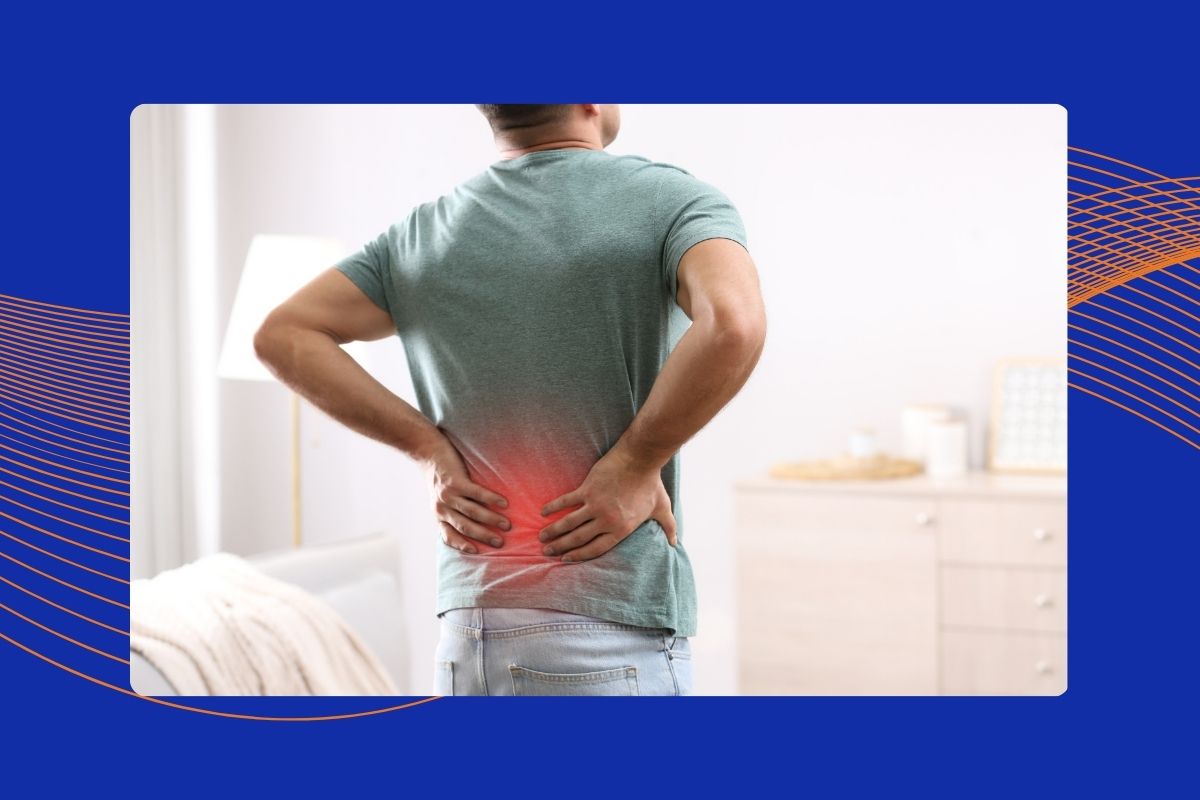Did you know that nearly 65 million Americans have reported a recent episode of back pain?
Long-term back pain is debilitating and can affect your ability to exercise, work, or spend time with loved ones. Many people don’t investigate their pain; they settle for over-the-counter medication and get back to their day.
If you’re dealing with lower back pain specifically, it can be frustrating to know the source of it. This guide is here to help. We’ll identify the common causes of lower back pain so you can take steps to find relief.
Ready to learn more? Let’s get started.
1. Lack of Physical Activity
Living a sedentary lifestyle leads to weak muscles, postural misalignments, and poor mobility. All of these symptoms contribute to lower back pain.
When your core, glutes, hips, and back muscles are weak, they fail to support your spine properly. This can lead to the misalignment of your spine and increase back issues.
If your job requires you to sit all day, you might be dealing with posture problems. If you’re slouching your shoulders, arching your lower back, and protruding your neck, you might risk back problems.
Having tight upper back and shoulder muscles can pull your spine out of alignment. The same thing applies to tight muscles in your legs and glutes. This can pull on your lumbar spine and create a lumbar curve.
Try to take regular breaks from sitting all day and dedicate more time to physical activity throughout the week.
2. Muscle Strain
One of the most common causes of lower back pain is muscle strains. These occur from overstretching muscles, repeated bending or twisting, contact sports, and lifting heavy items.
You can decrease your chances of having muscle strain by avoiding sitting in one position for too long. Taking frequent breaks and using a chair that provides good support will make a huge difference.
Also, be careful to lift objects carefully. You want to keep your back straight and lift with your legs. One of the most common causes of muscle strain is overworking your muscles by lifting heavy items improperly.
3. Herniated Disk
You have a series of bones in your spine; they start at the base of your skull and go down to your tailbone. Between these bones are round cushions called disks. Disks act as a buffer between your bones, allowing you to move easily.
When one of these disks leaks or tears, it’s called a herniated disk.
Not only can this cause lower back pain, but you might also have pain in your thighs or calves. Other symptoms include muscle weakness and numbness.
Herniated disks can be caused by:
- Decreased flexibility
- Regular wear and tear
- Twisting while lifting
- Lifting with back muscles instead of your legs
4. Injury
Getting injured from playing a sport, a car accident, or a fall can cause lower back pain. Blunt-force trauma to the body often results in an injury. A variety of traumatic incidents lead to back pain, but that pain tends to go away on its own.
If you are experiencing long-lasting pain, it’s crucial to see a doctor immediately. Waiting to seek help will only make the problem worse.
5. Osteoarthritis
The most common type of arthritis is osteoarthritis. It occurs when the cartilage in the joints begins to break down. This can cause back pain.
If you’re experiencing symptoms like swelling, stiffness, and a limited range of motion in your knees, hips, or hands, it could be because of osteoarthritis. Although medications such as ibuprofen and acetaminophen can help, occupational and physical therapy is the best option.
For more severe cases, cortisone or steroid injections may be necessary.
6. Fibromyalgia
About four million Americans are affected by fibromyalgia. This is when a person experiences muscle pain throughout their body for at least three months. Lower back pain is common with fibromyalgia.
People with fibromyalgia may be more sensitive to pain than people without it. This is called abnormal pain perception processing.
The cause of fibromyalgia isn’t known, but luckily it can be effectively treated and managed. You can take over-the-counter pain medicine and prescribed antidepressants in addition to physical therapy.
7. Scoliosis
Scoliosis is the sideways curve in your backbone, and it tends to show up when you’re a child or teenager. Anything that measures over ten degrees on an X-ray is considered scoliosis.
The most common type of scoliosis develops with no known cause. Scoliosis can cause back pain and a variety of other problems.
Certain signs of scoliosis include:
- Uneven hips
- Abnormal posture
- Hips that sit at an angle
- Shoulder blade that’s higher than the other
- Head that isn’t centered
If you recognize any of these signs and you’re feeling a significant amount of lower back pain, it’s time to seek professional help.
Avoid the Common Causes of Lower Back Pain
Low back pain can keep you from living life to the fullest. While some back pain comes and goes, it’s important to identify any prolonged back pain so you can get the treatment you need. Knowing the common causes of lower back pain is the first step to feeling your best.
Even if your back issues seem mild, seeing the right medical professional early on will prevent your condition from getting worse.
If you’re looking for spine care, look no further than The Advanced Spine Center. We have several locations in New Jersey and treat a variety of conditions. Be sure to contact us today for more information!
